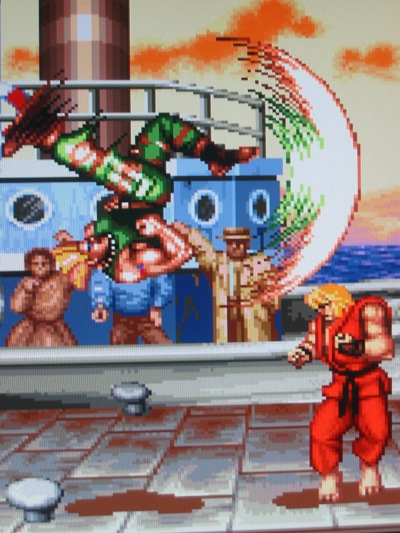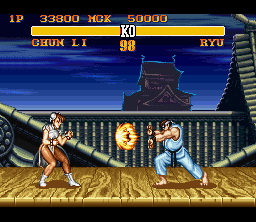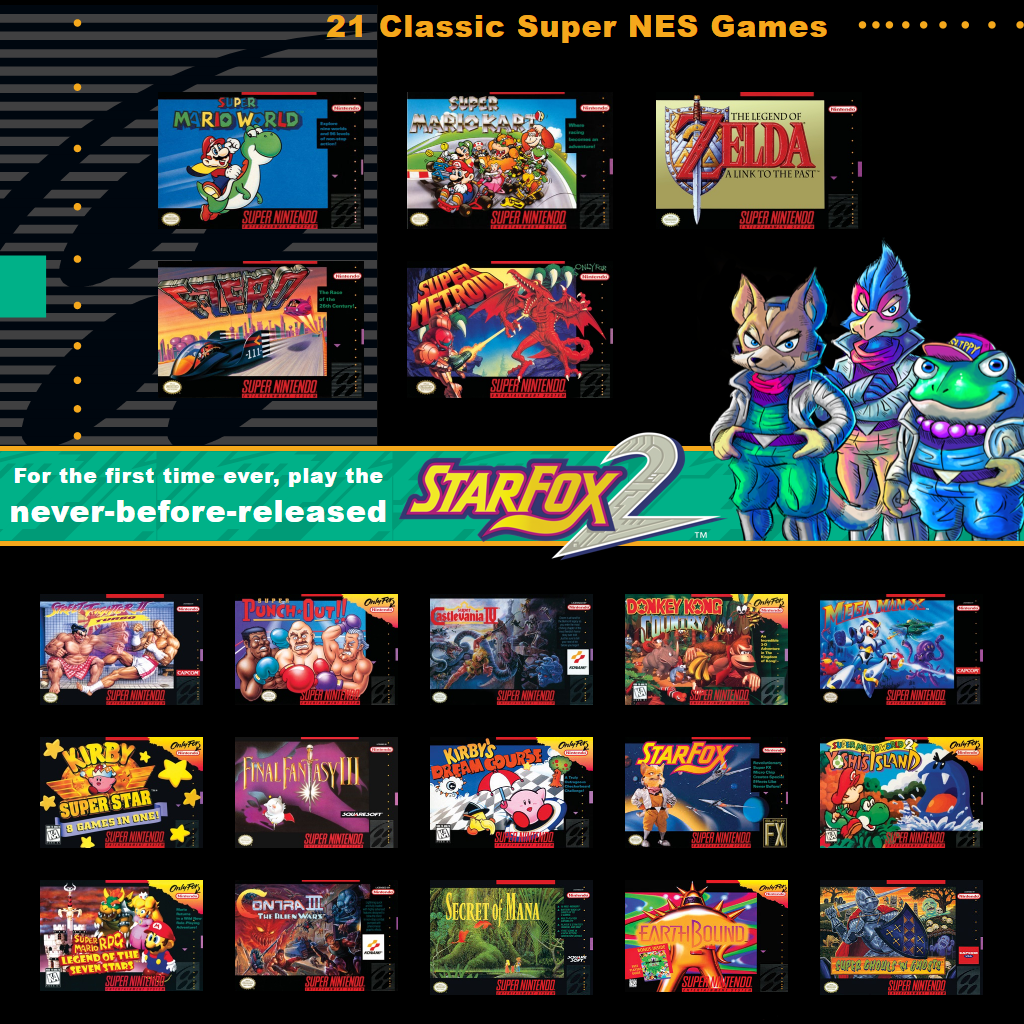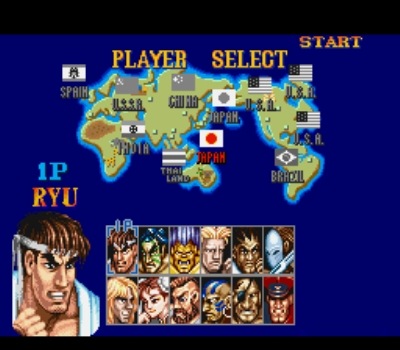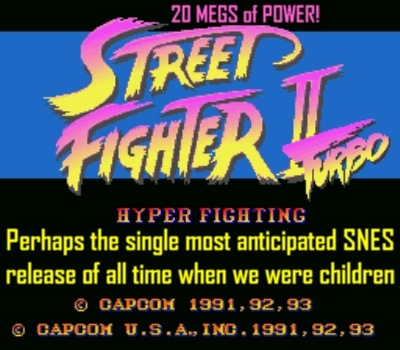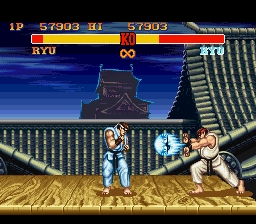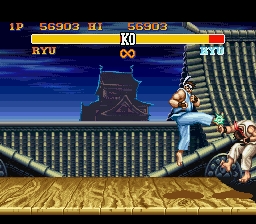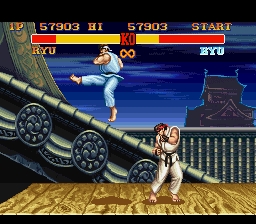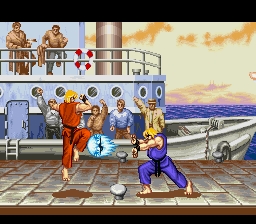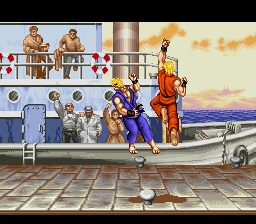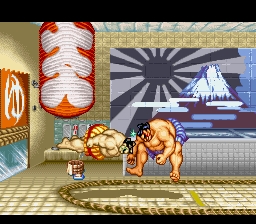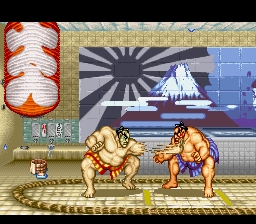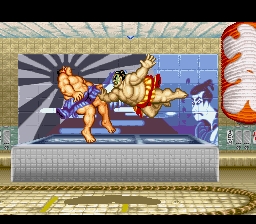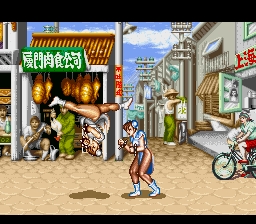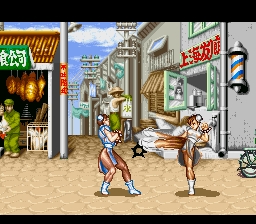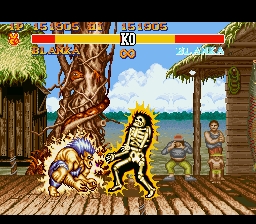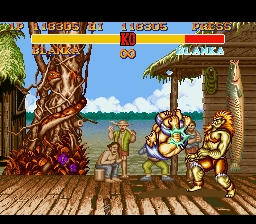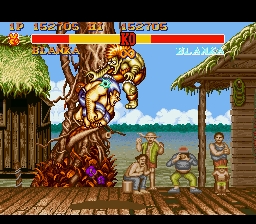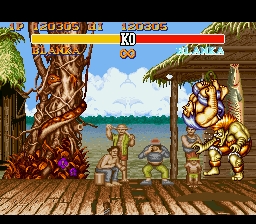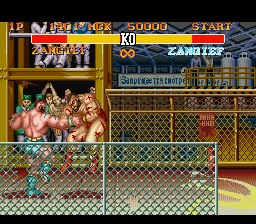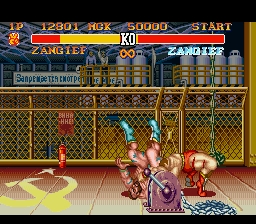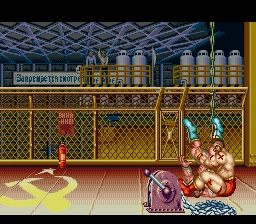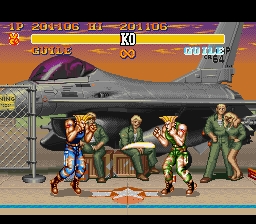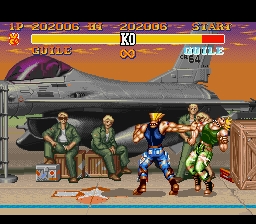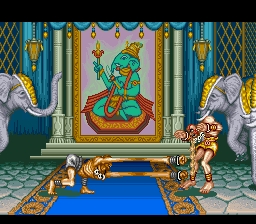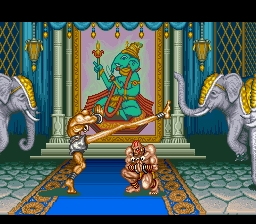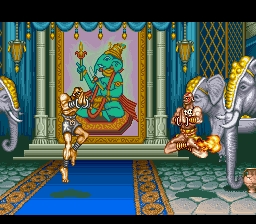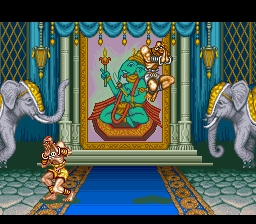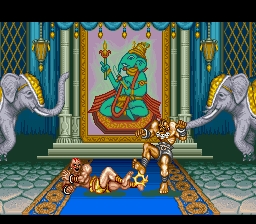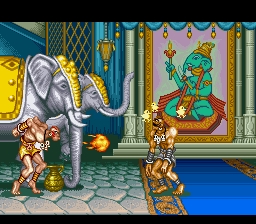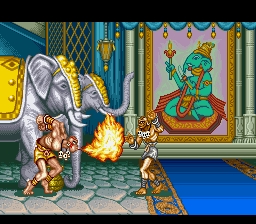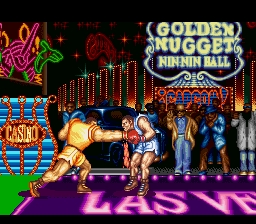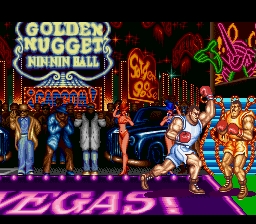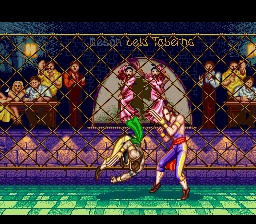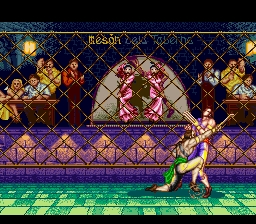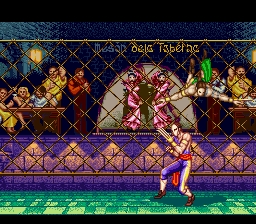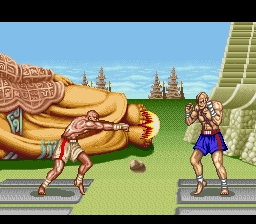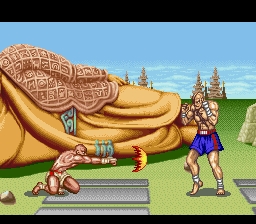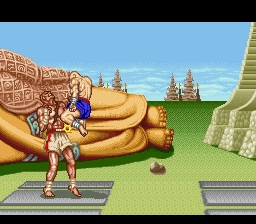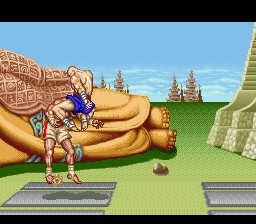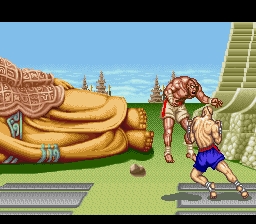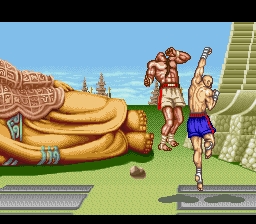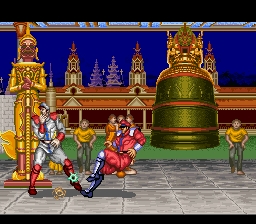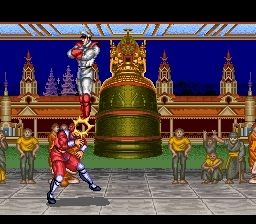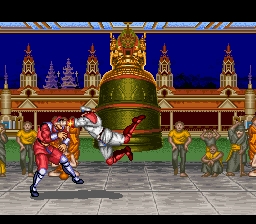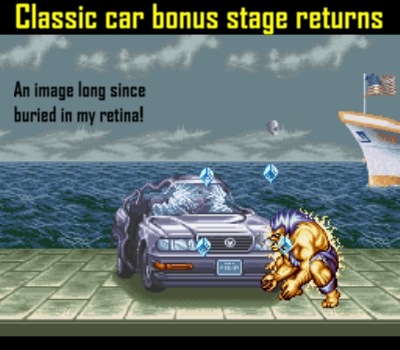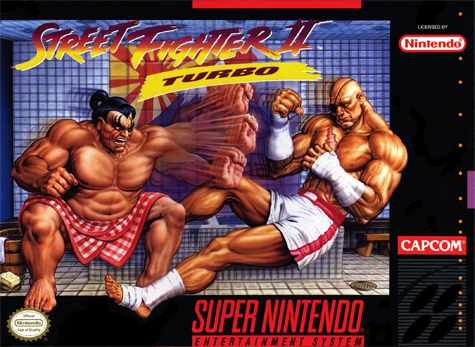
Street Fighter II jumpstarted a revolution, no doubt. Likewise, there is no doubt that Street Fighter II Turbo refined said revolution. Many would even argue perfected it. Allowing you to use the four boss characters, in addition to adding new special moves for most of the fighters and the all-important speed factor, Street Fighter II Turbo has cemented its place in video gaming lore. The hype surrounding the release back in the summer of 1993 was palpable and surreal. I remember my brother buying this game on launch day and nobody in my gaming group was disappointed one iota. Looking back, it’s easy to see it’s not a perfect conversion of the 1992 arcade smash hit, but man, back in those olden days it sure felt pretty damn close to perfect. You have to remember that home consoles back then weren’t close to being as strong as arcade cabs. It’s amazing what Capcom was able to translate to the little ol’ 16-bit SNES. My friends and I wasted so many hours on this one. Good times.
MAKING A COMEBACK
With the recent news of Nintendo releasing the SNES Classic Edition, Street Fighter II Turbo is once again being brought back into the public consciousness. It’s the only fighting game featured in the package and if you could only pick one then Nintendo made the right call. Let the nostalgia commence.
THE STREET FIGHTER PHENOMENON
Seeing this back in the summer of ’93 was every kid’s dream come true. All 12 Street Fighters available at the tip of your fingers. Same character selects with no codes. Finally, no more excuses. Survival of the strongest. Many scores were settled and many bruises ensued. Even better, Capcom was cool enough to include both Street Fighter II: Champion Edition and Turbo in one package. Champion Edition allows you to control the four boss characters and select the same fighters. Turbo upped the ante by giving most of the original cast a new special move and added a speed setting. Many consider Turbo to be the definitive version of Street Fighter II.
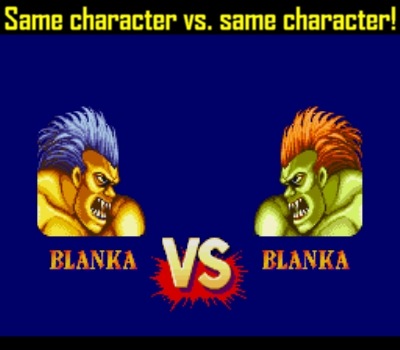
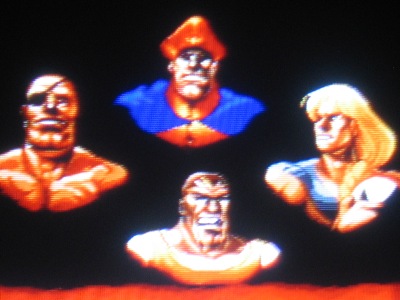
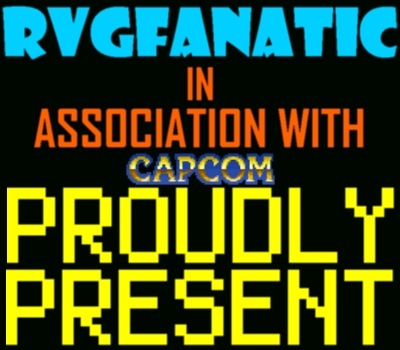
I still vividly remember to this day my brother rushing out to buy this game. I stayed at home counting down the minutes. Seeing my brother come back home with the Holy Grail firmly in his grasp was a moment of sheer euphoria. Experiencing the game in our living room, in all its 20 MEG glory, showing off the power of the SNES, it was crazy to see how far video gaming had come since the days of the 8-bit NES. Never was a system more aptly named than the SUPER Nintendo.
THE STREET FIGHTERS
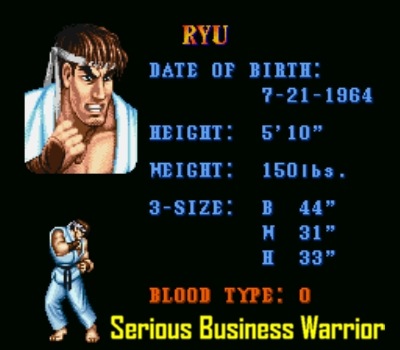
The face of the franchise, this straight edge no nonsense warrior is all about the fight and nothing else. Some may call him a little vanilla, but Ryu is as solid and consistent as a rock. He’s the Leonardo of the crew, and I guess every franchise needs that one leading cat, eh?
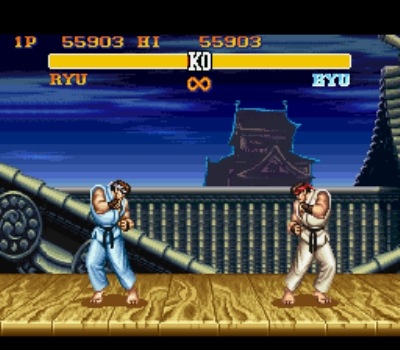
Ryu’s stage is simply classic. Battle for supremacy on top of a private roof. A nearby dojo looms hauntingly in the background. Sadly, the moon is missing but back in 1993 none of us really cared. We were way too busy appreciating what we had.
Straight up two of the most iconic special moves in all of fighting game history.
Hurricane Kick can now be performed in mid-air.
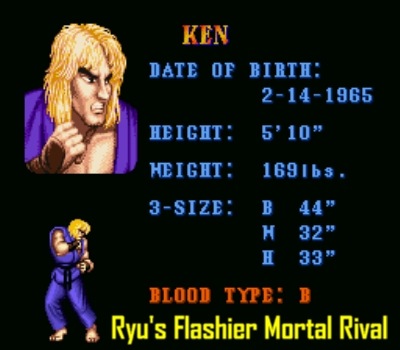
Every main protagonist needs a rival. Enter Ken, a flashier version of Ryu. Naturally, he’s a bit temperamental and one cocky son of a gun. Ken is perfect for those who want to control someone with Ryu’s moveset but has a little edge to their character.

Ken’s stage has always been one of my favorites. Being the complete opposite of Ryu in terms of personality, Ken wants a crowd to witness and worship his skills. Nothing gets him going more than humiliating his opponent in front of a packed house, or boat as it were. A pair of barrels propped to the right will shatter upon impact, adding insult to injury.
Similar moveset to Ryu but Ken’s Dragon Punch travels a bit farther.
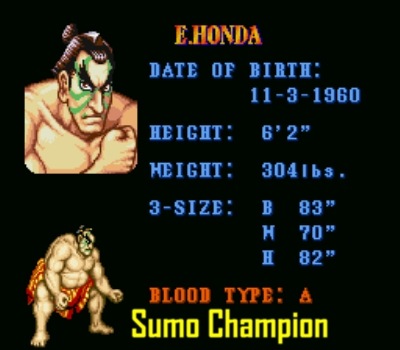
The residential sumo grand champion, Edmund Honda is determined to show the world that a sumo champ can also be the world’s greatest fighter. I never much cared for Honda back in the day but over the years have come to appreciate him more.
![Prepare for a blood bath [HAR HAR -Ed.]](http://rvgfanatic.com/wordpress/wp-content/uploads/2017/06/SF2Turbo12.jpg)
Edmund uses his thick head to devastating results. “OOP OINK!” He also has the fastest hands around, unleashing hell in the form of a hundred hand BITCH SLAP. It’s been upgraded; Honda can perform it while inching toward his opponent.
Honda’s new move serves as a bit of an anti-air special, followed by a diving ass attack. Assack, perhaps.
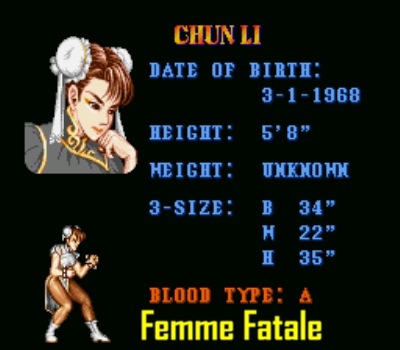
Many people think of Chun Li as being the first lady of fighting games. Other people have, AHEM, other thoughts about her but it would be inappropriate to cite said thoughts. You know her story. She’s out to avenge the death of her father who fell at the vile hands of M. Bison. She got arguably the best new move in Turbo as well. A fireball! Hey, it was a big deal back then.
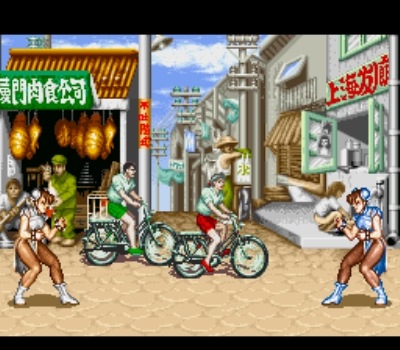
He’s really got no shame, the git. Chun Li’s stage is another classic that is burned into my soul. Duke it out in front of a busy marketplace complete with cyclists passing through. Should you emerge victorious, you can then partake in buying some dinner or even get a haircut. All in a day’s hard work!
#NEVERSKIPPEDLEGDAY.
Remember what a big deal people made back in the early ’90s that Chun Li now has a fireball of her own? And on a side note, her annoying infamous head stomp returns as well.
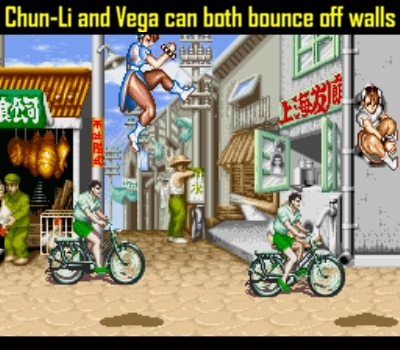
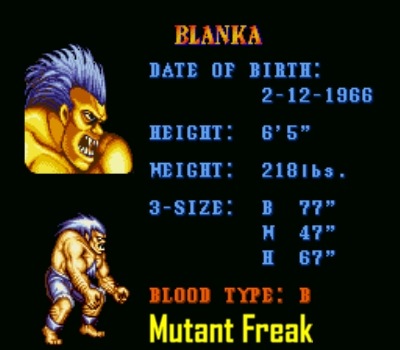
Ah, the tragic tale of Jimmy. The little boy who descended to the depths of a Brazilian jungle during a plane crash, only to be mutated and raised by the wild savages of the jungle. All that produced the beast you now see… BLANKA!
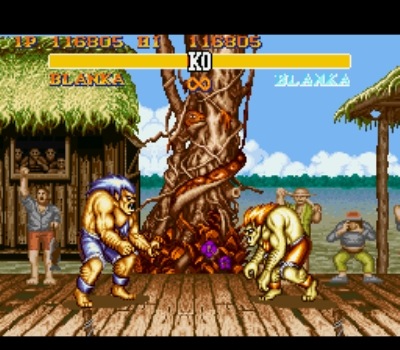
The music, the locals snapping photos to prove the existence of the beast, the savages cheering on from inside the hut packed in like a can of sardines, the giant clouds scrolling lazily by in the background, the giant anaconda wrapped around that decaying tree… this stage tells such a rich story and is perfection personified.
Blanka’s electric shock fits him so well. That x-ray animation is legendary. His rolling attack has been improved — Blanka no longer takes double damage if he’s hit during the attack.
Blanka’s new trick is a vertical rolling attack. It doubles as an anti-air move and it can also nail opponents on the way down.

If Chun Li is the first lady of fighting games, then surely Zangief is the first muscle maniac of the genre. It takes a very skilled player to use Zangief effectively. I love how he wrestles bears for a hobby, and his scar-laced body is proof that he is certifiably a turnbuckle shy of a wrestling ring!
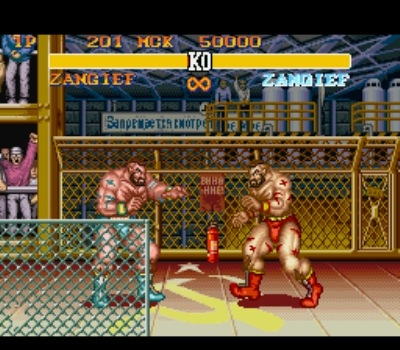
Held in the heartland of the USSR, factory workers take a break from the work grind to witness their beloved Zangief crush yet another poor victim.
Similar to Honda’s Hundred Hand Slap, the Spinning Clothesline can now move. It’s cool how a small change can actually make a big difference. His new move is a crushing German Suplex that would make ECW’s Taz proud!
Spinning Pile Driver still the most devastating move in the game!
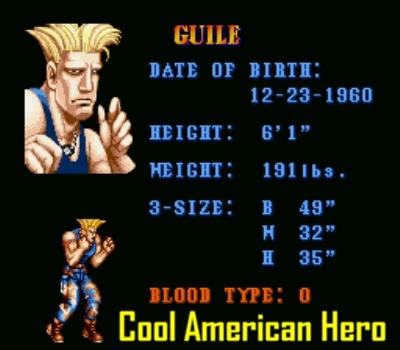
There’s something cool about a good old American badass. Guile fits that role to a tee. He doesn’t have a lot of special moves but he makes each one count. Forget about Charlie, Guile is where it’s at!
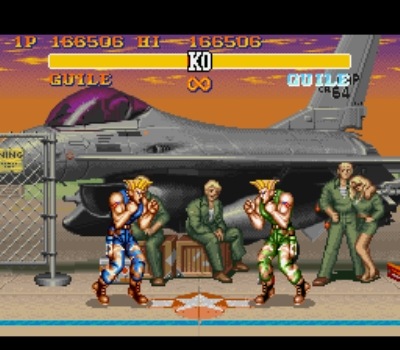
Street Fighter II has some of the best stages in fighting game history. Guile’s is yet another example of such. The music of this stage is stuck in my head to this day, and it never gets old throwing your opponent through the crates.
Hadoken set the bench mark for all projectiles to follow, but I’d argue that the Sonic Boom is almost just as memorable. Remember how the jab version was so slow that it allowed you to bash your opponent’s head in with a well-timed back fist? You can’t do that with the Hadoken, that’s for damn sure!
Champion Edition tweaked the Flash Kick to hit two times. I was never a fan of this change. Thankfully, it’s back to the classic one hit in the Turbo edition. I’ve always been a huge fan of Guile’s Flash Kick. To me it’s just as iconic as the Dragon Punch and it looks way cooler.
![[Very funny, NOT -Stretch Armstrong]](http://rvgfanatic.com/wordpress/wp-content/uploads/2017/06/SF2Turbo32.jpg)
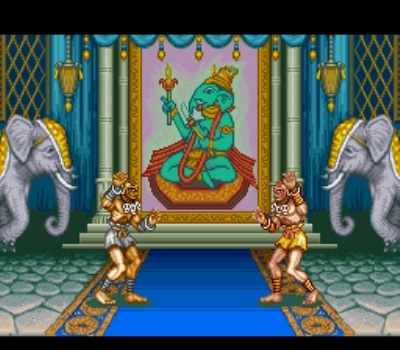
Yet another haunting stage. The elegant blue rug, the elephant god mural and of course, who could forget the elephants trumpeting at the end of each battle?
Dhalsim had the very unique ability of being able to stretch his limbs. This great gimmick was often copied in other fighting games from other companies. Hey, he was a trailblazer!
Teleportation is Dhalsim’s new special skill. Check out how he uses this new power to confuse, daze and nail his opponent!
Known for his signature fiery antics, he can spew a small fireball (Yoga Fire) or blow a larger one that is more short ranged but hits for more damage (Yoga Flame). The “on fire” animation is, no pun intended, seared into the memories of anyone who ever ventured through an arcade hall in the early ’90s.
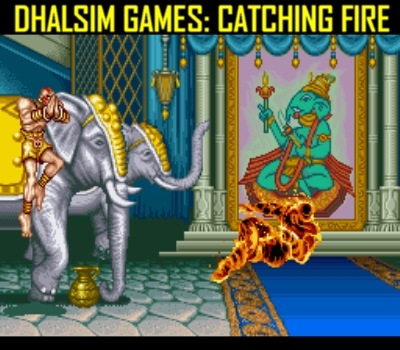

The first of the four boss characters, Balrog has always been the least interesting to me. He was a sign of the times; Capcom drew inspiration from “Iron” Mike Tyson.
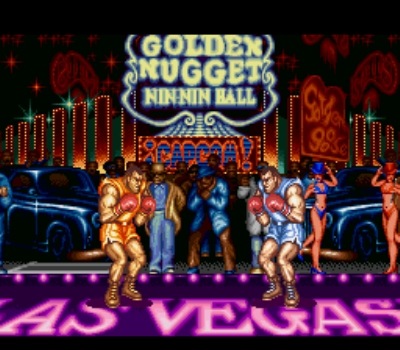
Fighting under the bright lights of Las Vegas, combatants duke it out as strippers, pimps and tourists cheer the carnage on. Epic background.
Balrog’s two special moves consist of rushing punch variations. In fact, he is the only fighter in the game to never use his feet. It takes a skilled player to use him effectively.
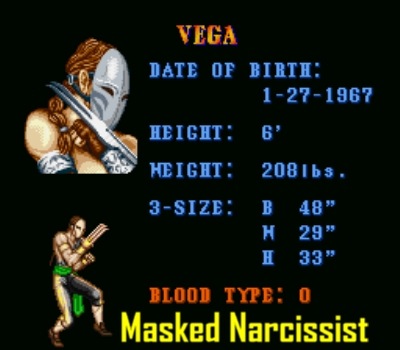
The first time I ever saw Vega I remember thinking how cool he was. Vega to me seemed like a combination of Freddy Krueger and Michael Myers. It wasn’t long before I realized he was nothing more than a masked narcissist with a claw. Just a pretty boy, and nothing at all like those terrifying monsters of my youth. Needless to say, I didn’t like him as much then!
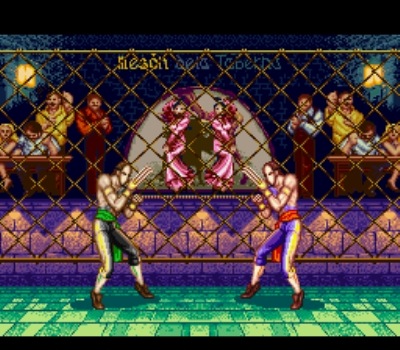
Dropped in the middle of an underground fighting world at an undisclosed location somewhere in Spain, the steel cage protects the spectators from the sheer chaos. But really, it serves as a tool for Vega to scale when things get too hot and heavy…
Vega’s rolling attack can connect several times and inflict a good deal of damage.
Nimble as a cat, Vega takes to the cage when all else fails. From here he can either pierce you with his razor sharp claw or catch you in an devastating overhead throw.
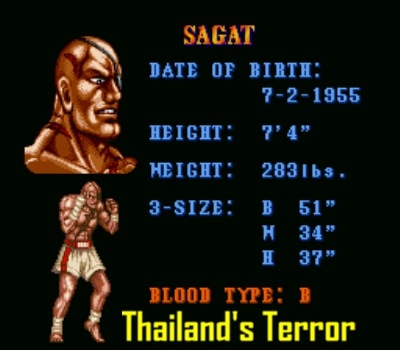

In the first Street Fighter tournament, reigning champion Sagat was dethroned by a young warrior named Ryu. Ryu’s Dragon Punch left an enormous scar on his chest and ever since then the Thailand terror has been training 24/7, waiting for the perfect moment to exact his revenge.
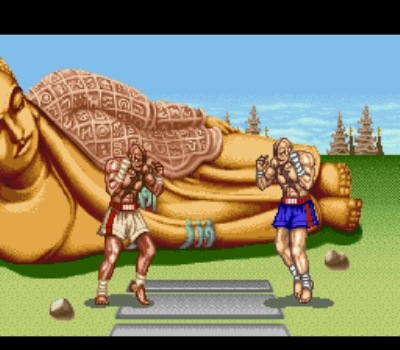
A giant Buddha statue oversees the battle as combatants wrestle to the death in this beautiful and serene stage. The temples in the backdrop remind me of the old 1982 Jet Li film, Shaolin Temple.
Sagat’s two Tiger Shots hits either high or low. Switch the velocity to keep your opponent on their toes.
Sagat’s Tiger Knee connects on the ground for up to two devastating hits, and doubles as an anti-air attack to boot.
Needing to counter Ryu’s lethal Dragon Punch, the deadly Tiger Uppercut came to life. His chest scar is a daily reminder of the pain and humiliation he suffered in the first tournament. Seeking vengeance, Sagat believes his Tiger Uppercut will be the difference maker.
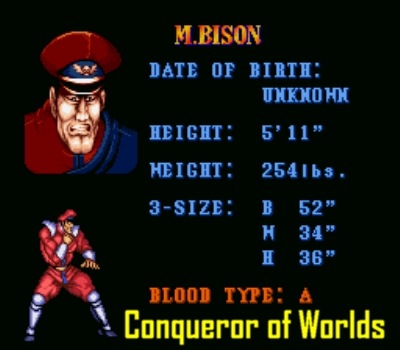
Remember how much we hated M. Bison as kids when he was in Street Fighter II? And remember how much we wanted to control him just so we could pull off his Psycho Crusher? Street Fighter II Turbo made our dreams come true.

The sky paints such an ominous backdrop. Towering golden statues decorate each side of the stage which you can send your opponent crashing through. A massive bell that looks like it came straight out of a Bob Ross water painting rests center stage.
Scissor Kick can hit up to two times, one high and one low. Tricky and deadly!
Jumping high, Bison plants both feet into your skull and then flies backwards to smash your temple in with his tyrannical fist. OUCH!

BONUS STAGES
Who could ever forget the first time seeing the car bonus stage? It’s an iconic gaming sight, and one that still resonates more than 25 years later.
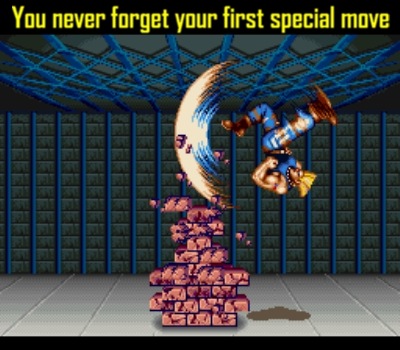
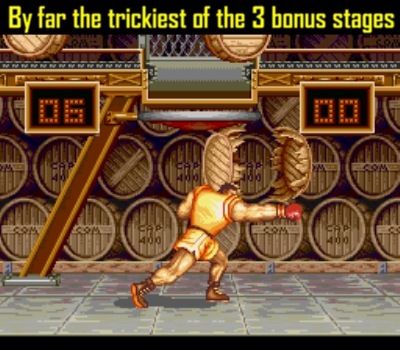
THE MAN IN THE MOUNTAIN
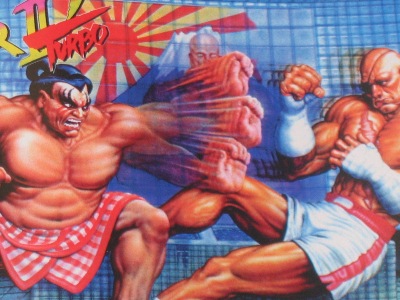
When we were kids my brother and I believed that was none other than Dhalsim on the front cover showing off his new teleportation special move. Fast forward some odd 15 years to 2008, I posted my memories about this on a message board and everyone there told me “No, it’s just Honda and Sagat on the cover.” I wasn’t so quick to buy in, though, as I assumed everyone thought back in the day the same thing that my brother and I did. The debate somehow summoned the original artist of the SNES Street Fighter II Turbo cover into the fold. He claimed that the strange bald figure seen on the cover is NOT Dhalsim. I asked him who was it then, but he never got back to me. The mural man doesn’t look a damn thing like the bald guy we see on the cover. Strange. I guess we’ll never know for sure. But I still stand by my original statement… to me it was clever Capcom showing off Dhalsim’s brand new special skill. That’s my story and I’m sticking to it! #childhoodconvictions
WHAT THE CRITICS SAID
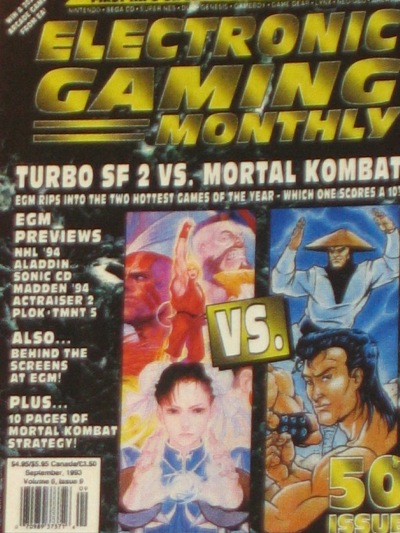
Street Fighter II Turbo was a smash hit with the critics. It earned Game of the Month accolades with EGM, posting scores of 9, 9, 10 and 10. GameFan gave it ratings of 98, 98, 99 and 100%. Super Play rated it a whopping 96% — the highest score they ever dished out. This port is widely considered as one of the BEST arcade to home translations on the SNES. In terms of top 100 lists, Nintendo Power ranked it #10, EGM had it at #5 and Super Play placed it at #2.

WHAT YOU, THE READERS, SAID
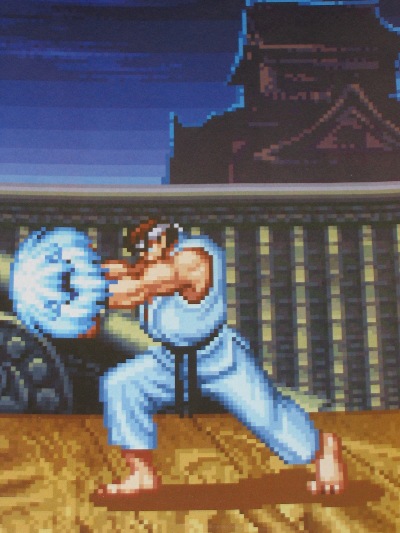
More than a decade ago, way back in February 2007, on my old original RVGFanatic website I ran a survey asking my readers to vote for their favorite SNES Street Fighter game. You voiced your opinion loudly. Now, more than 10 years later, the final results are in. Come on, you didn’t think I would lose those figures, right? Don’t answer that. While obviously not conclusive — this is one small sample after all — it’s interesting to see nevertheless. 10% prefer the very first one while 39% voted for Super Street Fighter II. It was no shock that Street Fighter II Turbo won the poll with a stirring 51% of the votes. I love all the SNES Street Fighter games (yes, even 1996’s Street Fighter Alpha 2) but Street Figher II Turbo to me will forever be the king.
CLOSING THOUGHTS
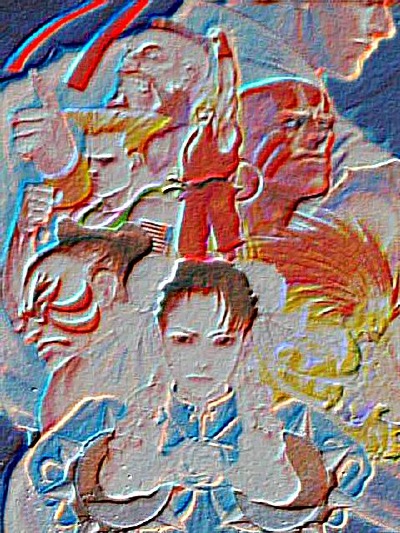
Street Fighter II Turbo forever holds a special place in my heart. It gave me and my gaming crew so many fond memories over the years. For my money, it is without a shadow of a doubt the best fighting game on the Super Nintendo. At the time it blew all of us away. And while it’s true that it isn’t a perfect conversion of the arcade (nobody expected it to be), it still made for the perfect SNES fighting game. Even though there have been arcade-perfect ports of Street Fighter II Turbo released on other systems over the years, I still find myself coming back to the SNES version and having a blast. Maybe I’m a little blinded by nostalgia but I’ll be damned if it doesn’t still hold up well nearly 25 years later.
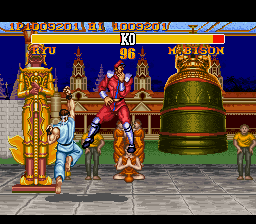
No, it definitely doesn’t. ![]()
Graphics: 10
Sound: 10
Gameplay: 10
Longevity: 10
Overall: 10
PLATINUM AWARD
 When you talk about Super Nintendo’s very finest, any discussion excluding Street Fighter II Turbo should automatically be null and void. It was a video gaming revolution — a special time we’re likely never to see again. I’m thankful I got to witness it first-hand.
When you talk about Super Nintendo’s very finest, any discussion excluding Street Fighter II Turbo should automatically be null and void. It was a video gaming revolution — a special time we’re likely never to see again. I’m thankful I got to witness it first-hand.
